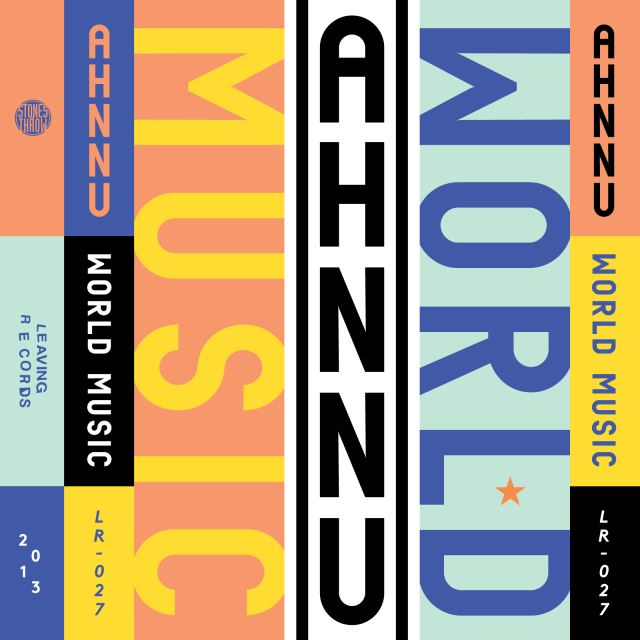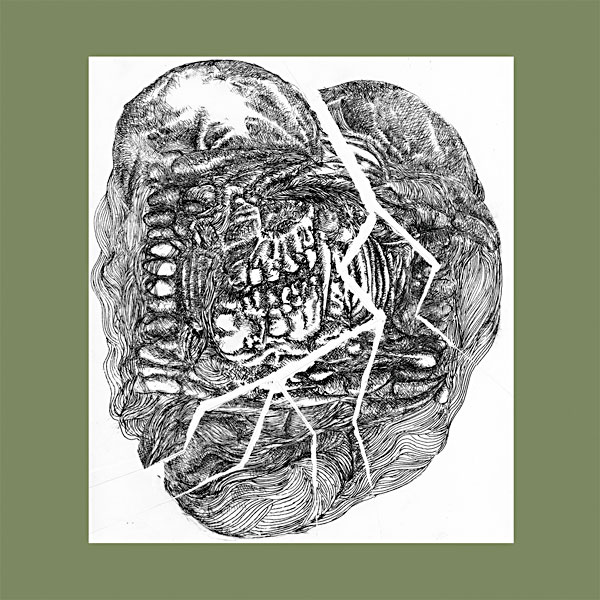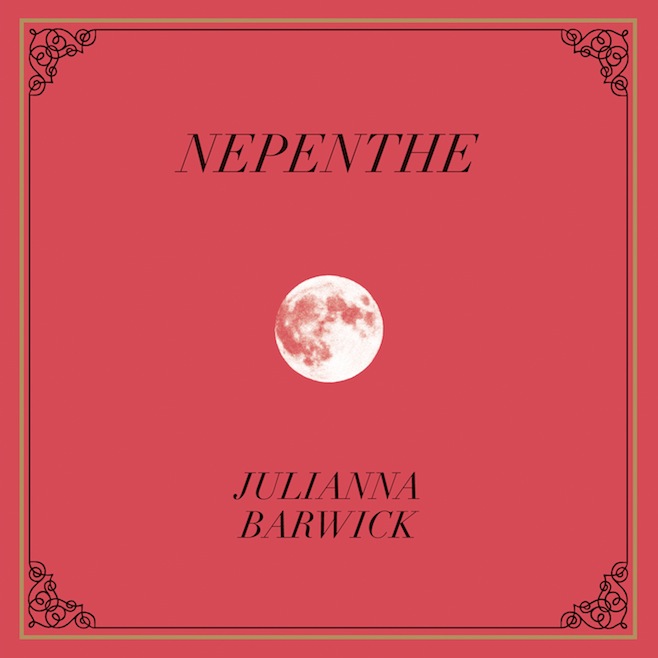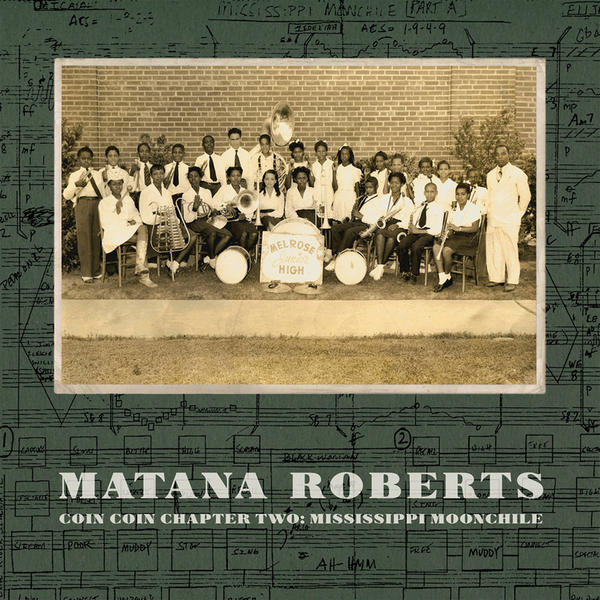We celebrate the end of the year the only way we know how: through lists, essays, and mixes. Join us as we explore the music and films that helped define the year. More from this series
40
Jenny Hval
Innocence Is Kinky
[Rune Grammofon]

When she let the jacket slide off her shoulders, all that was left was her skin. She felt it prick, despite the mild air and the profuse sweat that betrayed her feelings. Her body quivered in anticipation and anxiety for what she was about to do. She needed, not wanted, to do this flagrant exhibition of her flesh amongst strangers. As it stood, every mask of being she was supposed to wear never fit: they all felt imposed, unnatural. So, she seeks something else. And as she lets her body, tense yet excited, anguish in a tease for a little more, she sees that something as herself, without anything, any mask or moral, concealing her being. Deciding to let her complete and sexual nakedness be her voice for now, she understood herself as an object, but an object that nobody, not even herself, can control. Such freedom strips away all mentality. All that is left is the body, nothing more. She bit her lip in pleasure at the thought, for there is something pure, perhaps innocent, in that: She desired being whole, which meant letting the body speak for her, satiating its desires. Thus, she opened the door and walked into the daylight, glistening and dripping, to her own willing perversion.
39
Chief Keef
Almighty So
[Self-Released]

To fans and detractors alike, Chief Keef’s most frequent M.O. is “incomprehensible”: with his barely enunciated, Auto-Tune’d grumble of a vocal delivery, compounded by a shy and oblique interview demeanor, Sosa doesn’t care much for the “real rap” brand of transparency that earnest-as-fuck contemporaries like Lil Durk or Lil Bibby appear to fetishize. No matter how many haters overflow his YouTube uploads with whining comments, he doesn’t really give a fuck whether he ever makes another “Love Sosa,” and this year’s Almighty So mixtape found Keef ditching industry templates and the clichéd street truisms that confine the lyrical content of so many of his contemporaries. So much more than just a drill record, Almighty So was a queasy, Actavis-cured soup of surrealist rap ballads and overdriven, AK-riddled lurchers, a sonic realm sufficiently fucked to showcase Keef’s truly delirious flow. Flanked here by mercurial synth arpeggios only sporadically pinned down by the gravity of actual beats, Keef’s purposefully offbeat, singsong delivery never sounded more godlike. While he’s undoubtedly still coming into his own as a creative, when things really gelled on Almighty So, it was something completely unprecedented in hip-hop: violent yet delicate, clumsy yet effortless, a detuned, stumbling dystopia shot through the center with a heaping dose of Keef’s infectious rebel persona. To quote The Almighty himself: “They want that old Sosa/ For what, though?”
38
Ahnnu
World Music
[Leaving]

Unglue. Subdue. Renew. Ahnnu. World Music, by L.A. producer Leland Jackson as Ahnuu, was designed to distort the listener’s sense of time and cause a loss of focus on everything around us — even the music itself. Engineered to make the present feel infinite, the recent past ancient, and the future irrelevant, World Music was a fascinating experiment in the artistic capabilities of recontextualizing the world’s existing sound recordings, where minute-long tracks felt like hour-long daydreams. Less convoluted and spastic than previous work, World Music was at the same time less structured. The different bits of source material mingled with each other comfortably, with a less intrusive role of the creator. Cocktails of subdued jazz phrases and laidback organic percussion samples replaced the more hip-hop-oriented beat music that the artist had released throughout the last couple years — including TMT 2012 favorite pro habitat — to create a mood that was tranquil, natural, and left you meditating without you even knowing it.
37
Colin Stetson
New History Warfare Vol. 3: To See More Light
[Constellation]

Most people don’t love the cold, to be on a high mountaintop with your face to the wind and your exposure level acutely sensed. It’s likely more people love peppermint patties than the snow. But the cold, even the stinging, merciless chill that aches your eyeballs, can have its charm. Ever gaze up a tall building while it was snowing? Stand in a snowblurred forest and feel the stillness overtake you? Enjoy either of the first two Die Hard movies? There is as much value in experiencing an adverse element as there is defending one’s self against it. Colin Stetson’s New History Warfare Vol. 3: To See More Light ably dramatized the strain and pull against the elements and our place within and outside of them. It was almost like an action movie crossed with the human messiness of Leigh or Cassavetes. It was clammy and craven, but also as intimate as it was vast. It was some freezing cold sunshine that was easy to crush your weary bitter heart against, no less stark for the guest vocals and genre flirtations. Stetson continued to be both the warm, impervious coat and the shredding gales that inspired its existence, and we and 2013 were certainly better for it.
36
Wolf Eyes
No Answer: Lower Floors
[De Stijl]

It can be pretty hard to render the abstractly terrifying more real, if the “realistic” Pokémon of deviantart are anything to go by. No Answer: Lower Floors was what happens when purely hypothetical kinds of fear and terror are made breathing, seething, and uncomfortably close. Wolf Eyes have been exploring this territory for a long time, but this album sung unrelentingly with horrible purpose, conjuring the kind of searing terror that renders you supplicant on the mere suggestion of it existing. When we listen to records, we are experiencing an art form that creates by corralling; the album necessarily creates an environment that divides for itself a parcel of territory, cordoned off and boundaried as something unique and limited. When we look for the new in music, we look for the uncovered ground, music that shows mental terrain that not only didn’t exist, but was also barely even theoretical. To experience No Answer was to learn a new word for the dark, to throw a new light on the concept, like staring down the deepest well possible and falling down it at the same time. Play it to your kids!
35
Julianna Barwick
Nepenthe
[Dead Oceans]

In the last 20 years, post-rock artists have relied heavily on a few specific pieces of electronic gear for their echoey, dramatic sound — mostly stompboxes intended for looping, reverb, and volume swelling. Inside oceans of guitar twiddling, soundscape-shifting, and fuzz-squalling, these devices typically elicit feelings of detachment, isolation, loneliness, ruin, and severity. Julianna Barwick co-opted one of the crown jewels in this cadre’s pantheon of effect boxes: the Boss RC-50, a gadget that allows users to create and combine live musical loops. Relying largely on this single machine and her voice, Barwick created experimental music of beauty and passion. While her 2011 debut The Magic Place certainly turned heads at the time, Nepenthe was clearly several steps ahead. The songs here sounded immense, ornate, and mature. Barwick was perhaps classifiable within ambient post-rock since she largely eschews traditional syncopated rock rhythms while still excavating some of its structure. But while more “traditional” members of the genre typically bluster forward with wheezing feedback and the roar of distant, rumbling trains, Barwick radiated outward with swirling strings and children’s choirs of celestial temples. She forwent loneliness for benevolence, severity for tender hope. When Nepenthe’s songs built up to their climaxes, they made for some of the most penetrating sonic moments of 2013. It’s especially remarkable, then, that all these otherworldly, transcendent sounds originated with Barwick’s solitary voice — looped repeatedly.
34
The Flaming Lips
The Terror
[Warner Bros.]

With every kitschy toy and chocolate skull the band creates, an easy and potentially understandable response to The Flaming Lips would be to dismiss them outright. Yet the Oklahoma-based psychedelic wanderers manage to outrun all of our expectations and the expensive gewgaws. This year, it was with The Terror, both a final nail in the multi-colored coffin of their big rousing call-to-arms days of the 2000s and a beautiful melding of that period with the brash drones and attitude of their earliest incarnation. How that appeared on record was as synth-heavy burbles heavy on drone and atmospherics, with Wayne Coyne floating above it all, filtering the dying squalls of HAL 9000 through his apocalyptic and mournful lyrical visions. Don’t let the fall down this particular rabbit hole throw you off. Trust the whispering voice in your ear, and enjoy the colors and images that float into your field of vision.
33
Lee Noble
Ruiner
[Bathetic]
In writing about Alvin Lucier’s I am Sitting In A Room, Peter T claimed that a big part of understanding lo-fi music comes through how we relate the music to its original space through “bits of sonic ephemera that were present at the site of recording.” In many ways, the role of space is also incredibly important in the world of ambient music, but the key difference is that space in ambient music is often synthetically constructed. One of the things that made Lee Noble’s Ruiner such an incredible feat was that he was able to combine lo-fi pop’s intimate space with the expanse of ambient music in an entirely streamlined, singular way. At times, Noble showed how easily these spaces could bleed into each other, as on album centerpiece “Demon Pond,” where dissonant layered field recordings bled into synths that eventually became accompanimental material for an apocalyptic folk song. However, Noble’s spatial interactions were often subtler, with “sonic ephemera” such as microphone feedback transforming itself into falling synth arpeggios on “Remind Me.” Throughout, Noble recasted his lo-fi songs as the catalyst for drone-based exploration, consequently rendering the intimate expansive, and vice versa.
32
Nmesh
Nu.Wav Hallucinations
[AMDISCS]

Recovering from the last concussion. The worst nightmare scenario I’ve had. The sound of airplanes, a sweet beat of Days of Thunder’s big brother film. A VHS vision of Mariah Carey in another voice telling me that I need to relax. Johnny Marr carelessly playing his most identifiable riffs to an audience of only my brain damage. And there I was, again, in the arcade: Chun-Li in my Turtles in Time console, my family telling me over and over to “ΞAT THΞ ΞGGS”. Someone reaches into my ear and pulls out a Twizzlers Pull n’ Peel; mom and dad never told me that grandma took acid! And then, bursting through the screen: my older brother! He grabs me by the hair and says, “We’re into Barbie!” If I fell asleep here and woke up with a beard, would someone find me, take off the headphones, and hear, “eeeeeyyyeees wwwiiiitttthhhhouuuuut aaa faaaaccccceee,” “your hair looks like a sunrise,” “I LOVE POCKY STICKS!” But that’s the thing about these Nu.wav Hallucinations: the drug was freely available. I can now see how empty of substance my childhood really was! And you want to know the weirdest part? My remaining senses enjoyed it. It was heaven! I was told it belonged to that one genre, Whatchamacallit? I don’t remember anymore; there’s too much past to sort through.
31
Matana Roberts
COIN COIN Chapter Two: Mississippi Moonchile
[Constellation]

“There are some things I just can’t tell you about, honey.” The words of Matana Roberts’s grandmother — from an interview that became a crux for the second chapter of her epic series — didn’t seem to keep COIN COIN from telling us about all kinds of things anyway. At least the important things. Over and over again, we heard the history of our families, our country, and our music. We heard the bustling honks and horns of our city streets, the mourning and memory of our passed loved ones, the richness of our culture, all of it told through the blues, the opera, and improvisation, patched together like a quilt rich with bright colors and soft textures. Roberts combined various artistic mediums and styles so seamlessly and, seemingly, effortlessly that its maddening mechanics and brilliant performance were ultimately transcended to give something as intimidating and opaque as free-jazz a certain kind of clarity that was digestible, listenable, and most importantly fun. And indeed, Mississippi Moonchile was also so powerful because where history lessons might normally inspire notions of sadness, shame, or regret, Roberts’s portraits, even while tracing tales of tragedy, couldn’t help but draw smiles.
We celebrate the end of the year the only way we know how: through lists, essays, and mixes. Join us as we explore the music and films that helped define the year. More from this series
